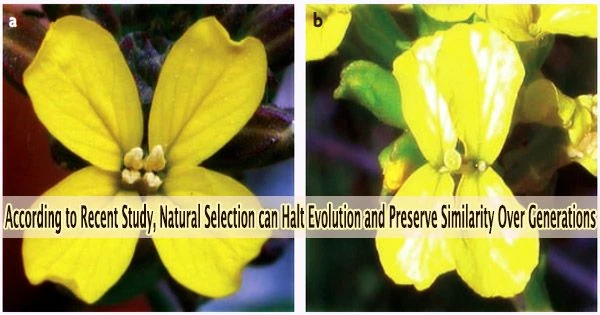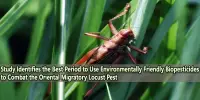The context of change is typically used to understand natural selection. Deviating from the norm may give organisms benefits that enable their lineages to outlive those of their less adaptable ancestors.
However, recent study from Michigan State University indicates that natural selection may also be able to maintain the status quo.
“We always talk about the vast diversity of life and we should. It’s incredible. Natural selection has given us a lot of that diversity, probably most of it,” said Jeff Conner, a professor with the College of Natural Science and the W.K. Kellogg Biological Station, or KBS. “But natural selection can also cause similarities.”
Conner is also a faculty member in the Department of Plant Biology and MSU’s Ecology, Evolution and Behavior, or EEB, program. Additionally, he serves as president-elect of the American Society of Naturalists.
In response to another evolutionary mechanism known as genetic constraint, Conner and his team have published a new paper in the journal New Phytologist that deepens our understanding of natural selection.
The theory behind restriction is that when a species develops, it may lose some genetic flexibility. This drives specific traits to stabilize and persist through generations.
Therefore, it’s easy to think of constraints as the brakes that keep or conserve similarities while natural selection acts as the accelerator that propels diverse or divergent traits.
“Our work flips the script on that a little bit,” Conner said. “We’re suggesting that selection can also slow things down, that it can cause similarities as well as differences.”
During the peer-review process, the work was described as a fascinating project that challenged long-standing assumptions.
Probing selection and constraint
This new paper expands upon an earlier report by Conner’s team, which was headed by graduate student Robin Waterman earlier this year. The research that initially raised the possibility that selection might be the cause of trait conservation was published in the journal Evolution.
This family of plants has maintained this four-long, two-short trait over 50 million years and we can get rid of a third of the difference in five generations, which would be five years. My guess is if we kept going, we would get back to six stamens of equal length.
Professor Jeff Conner
But the researchers still needed to rule out contributions from constraint, which they’ve done in the New Phytologist report.
Wild radish was used as a model organism in both experiments, but the plant is also a very destructive weed in agriculture, especially in wheat fields in Australia and the southeast of the United States.
The length of the stamens, or pollen-producing portions, of wild radish was examined by the researchers for both articles. Two of its six stamens are short and four are long.
This trait or feature is also shared widely across wild radish’s nearly 4,000 relatives in the mustard family. This includes numerous crops like kale, cauliflower, and Brussels sprouts as well as Arabidopsis thaliana, another significant model organism; garlic mustard, an invasive invader in the United States; and other organisms.
Therefore, even though the researchers’ attention in these two reports was on basic biology, their work may serve as an inspiration for future study that will be useful to both scientists and farmers around the world.
The scientists used so-called artificial selection to assess how selection and constraint affected this family’s particular stamen feature. To try to alter this trait, they selectively grew wild radishes whose stamens were closer to the same length.
“Perhaps the best method to test for short-term constraints is artificial selection because if a trait responds to artificial selection, it clearly can evolve,” the team wrote. “But if the trait does not respond, there is a constraint caused by a lack of genetic variation.”
Not only did the trait respond, it did so very quickly. The team reduced the stamen length difference by more than 30% during the experiments.
“This family of plants has maintained this four-long, two-short trait over 50 million years and we can get rid of a third of the difference in five generations, which would be five years,” Conner said. “My guess is if we kept going, we would get back to six stamens of equal length.”
This family’s predecessors had stamens that were all the same length, and a few of the family’s species have since returned to having stamens of the same length. However, it is most likely due to natural selection that wild radish and the bulk of its relatives have evolved and retained the four-long, two-short motif.
Although they are unsure of the exact nature of this advantage, scientists assume that the species benefits from the stamens’ various lengths when it comes to how pollinators interact with the plant. Working with undergraduates and K-12 teachers through their lab at KBS, Waterman and Conner have designed experiments to look into that.
So wild radish still holds some mysteries, but it’s provided a potent reminder of the power of natural selection.
“Natural selection is very important,” Conner said. “A lot of things people have thought selection couldn’t do, we’re learning selection can do.”
















